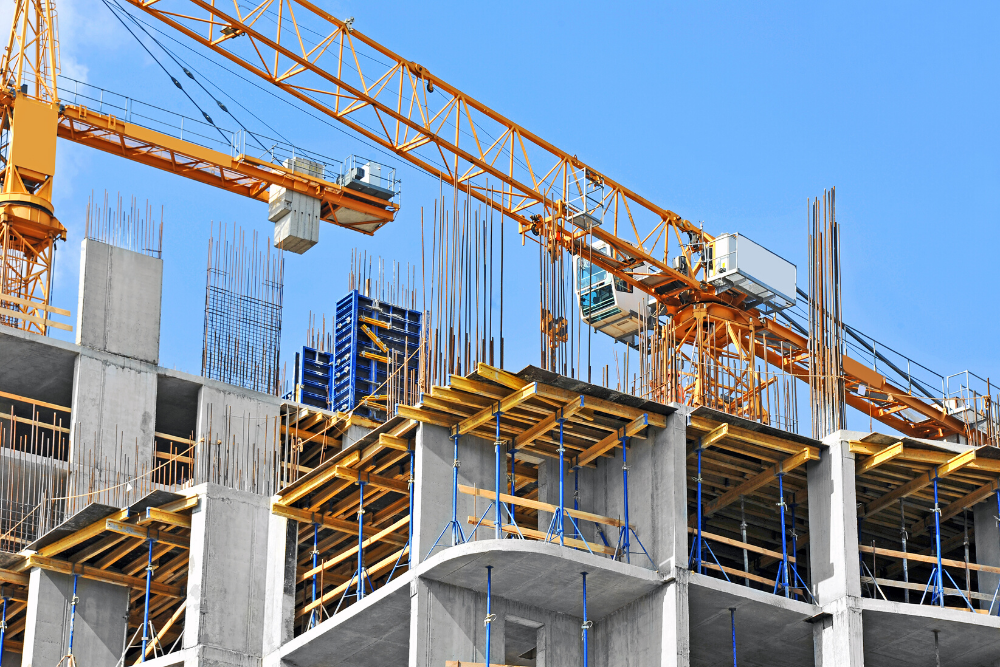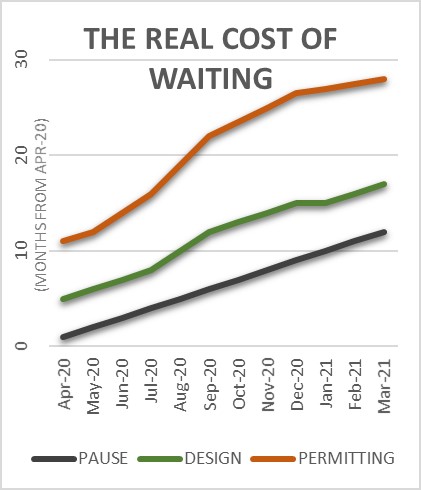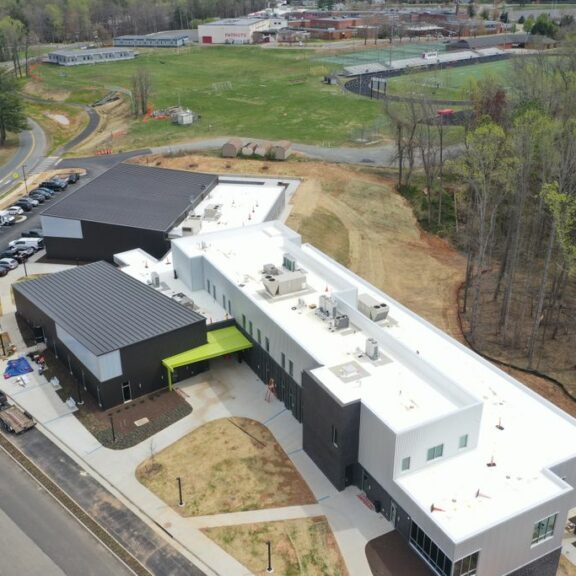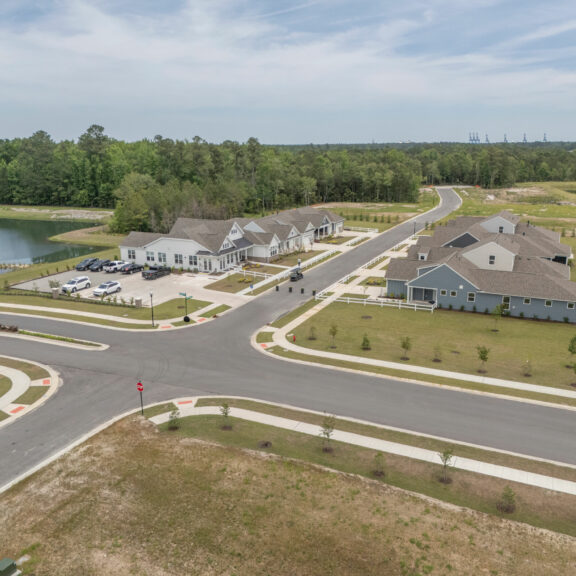
A global economic shutdown has never before happened, at least not in the way the current crisis is unfolding. What should real estate developers and builders do during this time? Now is the time for developers to position their projects for success in the months and years ahead.
The flow of money will largely dictate the pace of recovery, but much uncertainty is driven by something common to all of us – emotion. And when emotions outpace rational thinking, the tendency is to do nothing. To stop. Given that, we also know that people will continue to need housing, schools will continue to need updates, and the growth of society will demand new development.
So, what do the next six months look like? There are many variables that need to be considered by developers in navigating the COVID19 crisis, and what it means to their projects. One important variable is time.
Permitting Timelines
Decades ago, the construction of a project nearly always took longer than the time it took to design and get a permit for construction. In recent decades, with the constant growth in regulations, policies, and ordinances, that dynamic has flipped. Given that reality, developers should be very sensitive to the timeline of bringing their development to market. And with the current health crisis, we can expect more regulations to come in the very near future, further complicating the already complex process.
Nearly every development now involves not only local government permitting, but state and federal review as well. Each of these agency reviews takes time and none are beholden to the other. A municipality may have a very efficient community development review process, but if the federal agencies that have jurisdiction in that area are slow to respond, the project stalls. Developers who recognize that the critical path of being first to market through the design and permitting calendar will have a distinct advantage over those who don’t.
Lonely Reviewers
As the world slows, those in government reviewing development plans will likely see their caseload drop. These reviewers are sure to be in a better position now and in the months ahead, even if working from home, to be more responsive to project needs than during the booming economy just two short months ago. Translated, the potential for faster and more focused turnaround is greater now than ever. Developers can see a benefit of overall permitting measured in months by taking advantage of this new dynamic.

Available Resources
Until recently, many in the real estate industry have had too many irons in the fire to make sure everything they need is getting done across all their assets. A grand opening for a store may drain all resources, internally and externally, to make sure the opening is a success. Developers who have juggled with too many tasks in too short a timeline for their development schedules now can take a more proactive look at all their asset need so that when the economic growth begins again, they will be ready. For instance, a developer may have been putting off locating that easement plat they know they need to provide to a locality in order to finalize a permit. Having that plat in hand will put more control in the developer’s hands when they are ready to press forward with development.
Likewise, a builder obligated to provide soil tests on all lots before building permits can be issued would benefit by getting these tests done now, while there is a lull in the activity. These tests will be needed anyway, whether the builder ultimately builds the project or sells the land. Either way, the builder is better positioned by having the tests behind them.
Many of these resource needs, from wetlands identification to boundary plats to required traffic studies, take time to perform. And until recently, the pace of real estate development had put huge pressure on turnaround times for these services. The slowdown in the overall economy has eased the volume of activity in these areas and the developer may find much improved timelines for getting these required tasks accomplished.
The Cost of Doing Nothing
Certainly, there are reasons that developers may pause on development planning activities. Especially for those industries hardest hit by COVID19, it is understandable why they would want to tap the brakes, if not halt altogether for a few months. But for most sectors in real estate, the post-COVID19 trends are likely to generally be consistent with trends prior to the virus spread, and slowing or stopping development planning and permitting could have bigger costs down the road.
When the curve of the crisis flattens and confidence resumes in the economy, so will the permitting submissions. It is easy to understand the potential logjam from a review and approval perspective, given the fact that there may be fewer reviewers, once furloughs made their way through the municipalities. Those fewer reviewers will be reviewing a greater caseload, and what was already a six month process may jump to a year-long wait. Field visits, survey locating, and site inspections, both by consultants and government agencies, will be harder to schedule, since they are tied to the availability of fewer people doing more work.
There is a close correlation between our attempts to flatten the curve of the coronavirus and the development pipeline for real estate projects. If developers don’t “mitigate” the impacts of a significant slowdown by continuing those activities that are needed, then they could easily see a steeper “curve” of delayed projects and loss of position in the marketplace when properties, leases, and transactions pick back up to their recent pace.
Those who recognize this and take advantage of active planning and permitting over the next six months will be in the driver seat when the race resumes.




